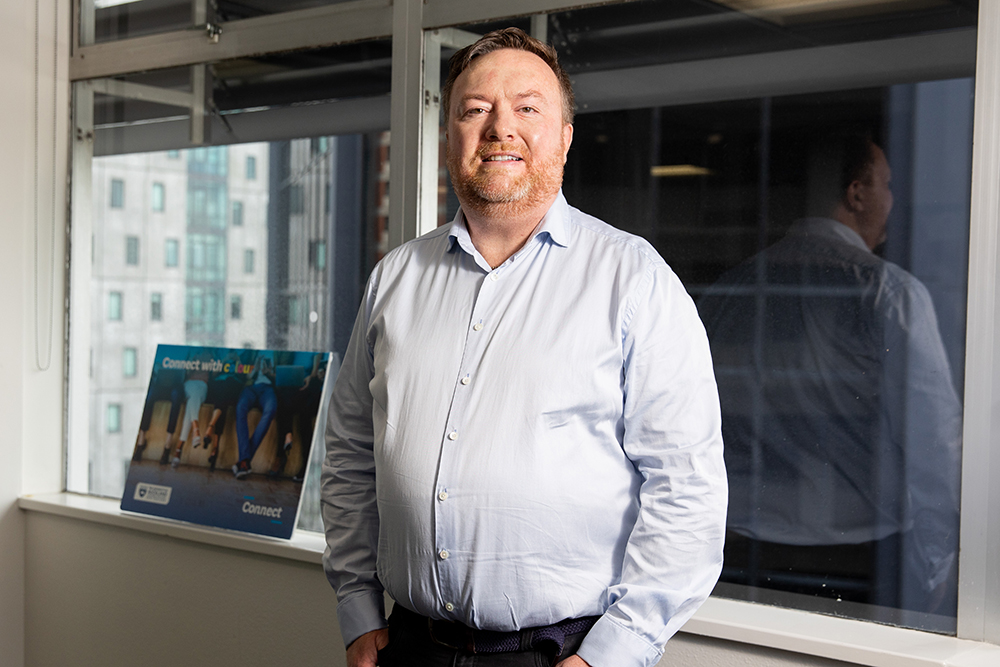Transforming the skills base of a high-calibre IT team at one of the world’s top universities to achieve less reliance on external experts can be almost overwhelmingly challenging. But it’s a task undertaken and successfully delivered by Richard Elliott, Head of IT Transformation at the University of Auckland, which boasts more than 5,000 staff and 45,000 students.
In order to achieve the skills base transformation Richard Elliott sought at the University of Auckland, he defined each of the 330 roles at its IT department, then mapped them against the global skills and competency SFIA framework, before finally aligning them with a comprehensive training program – all in an attempt to ensure that the department could deliver the kind of technology that will ensure its continuing reputation as a world-class educational institution.
While the SFIA framework was able to create an inventory of skills, the next stage was to take advantage of Skillsoft’s Percipio platform so the team could develop new skills and the increased agility required for the team as a whole could be achieved.
This enabled the establishment of ConnectEd, a digital learning portal, providing structured learning resources tailored to the needs of individuals and with courses aligned to the SFIA skills framework.
We asked Richard Elliott further questions about the project.

How do you ensure an IT workforce has the necessary skills for an environment where change is constant?
While the pace of change remains at a high tempo the roadmap for key technology shifts and changes is clearer for us in higher education than perhaps in other sectors.
In terms of providing a broad spectrum of technology powered services to a community of students, academics, researchers and professional staff we tend to be neither leaders nor laggards when it comes to the adoption of new technologies and so have the opportunity to learn from the successes and failures of others.
To ensure skills remain up-to-date, we focus on ensuring our workforce have the means, the methods and the motivation to adapt to change at an optimum pace, by making up-skilling and cross-skilling an explicit priority and the practical application of learning a part of everyone’s job, not just something that is discretionary, or only looked at during less busy times (we’re always busy!).
We use SFIA, the Skills Framework for the Information Age to give us a common language to describe the skills needed and we profile all our roles using the framework so people can have clear understanding of the skills and proficiency levels expected of them.
Development planning for professional and technical skills is baked into our performance management and personal development process, including having regular check-ins and conversations about individual and team goals and what skills growth is needed to achieve them.
We provide access to great learning and development resources like ConnectEd (our digital learning academy, powered by Percipio from Skillsoft) and we encourage our experts to work with our novices to help them apply what they have learned in abstract to solve real challenges in their day-to-day work.
We encourage all our people to plan in 10-20% of their time for experimentation, innovation and upskilling and we encourage lateral movement through and across our teams to provide more opportunities to learn and to apply learning.
What challenge is presented by the increased expectations relating to what is achievable through technology?
I think the challenges tend to be about how quickly solutions can be created and the quality of the user experience. We all want intuitive and easy to use solutions and we are increasingly expected to provide complex solutions in shorter timeframes.
This reflects the experience and expectations we form as consumers in our personal lives influencing us at work. Luckily, innovation in both technology and the way we go about tackling the work have allowed us to largely keep pace with expectation.
What is the danger in thinking of technology roles in a rigid fashion?
It inevitably leads to siloed thinking and discourages innovation and collaboration across domains. It discourages the democratisation and dissemination of knowledge and know-how and ultimately reduces an organization’s ability to respond quickly and effectively.
What was the importance of drawing up a competency framework and how did you achieve this?
Using a competency framework makes it simple to set and agree expectations in a role using clear and objective language. It removes most of the ambiguity and provides a clear and explicit standard to aspire to or demonstrate. We were lucky in having SFIA available to us as an ICT function, so we had a very firm set of foundations on which to then build our approach to skills agility.
How does the IT department help the university ensure its reputation as a world-class educational establishment?
Digital and technology is now an integral part of all aspects of the University of Auckland, supporting core objectives in learning, teaching and research, but also contributing to the university’s success as a vibrant city center campus with strong ties to industry and the communities it supports.
The university consistently outperforms institutions of similar size and wealth in regional and global rankings and the way in which our technology teams work closely with colleagues from all areas to deliver high value services and solutions in an effective and responsive way contributes to that success.
What was the benefit of using the SFIA skills framework?
It’s based on the combined knowledge, experience and feedback of thousands of technology professionals and can be used as a cornerstone for a broad range of people and skills related use cases, from attracting and recruiting better candidates, identifying and managing risks, spotting opportunities to make optimum use of ‘skills to hand’ and even planning different future scenarios and operating modes by using it for strategic workforce planning.
How do you address any skills gaps made apparent by the framework?
We encourage our people leaders and teams to try and define the risks associated with skills gaps and come up with appropriate action plans. This can inform large-scale co-ordinated upskilling programs such as our Cloud Uplift Skills & Practices (CUSP) program that will impact nearly all our people and transform the breadth and depth of our capability so we can derive maximum value from our public cloud investment.
It can result in teams collaborating to learn, coach and ultimately upskill collectively. It can be an individual identifying a specific development priority and applying the 70:20:10 rule to first learning (or being taught) a new skill and then creating an opportunity to put it into practice and validate it as a new competence. Critically though, it can also result in no action being taken.
Across a large and multi-skilled function, staffed with people with a growth-mindset and the right culture, not every skill gap needs to be addressed, because this approach provides so much more confidence and certainty around which skills gaps are the most important to address.
When and how did you start using Skillsoft’s Percipio platform?
About 18 months ago, through an introduction via the university’s learning and development team. The Skillsoft team ran a showcase event that the university hosted. I was impressed by Skillsoft’s own transformation into an organization that had understood the need to transform itself to keep pace with the new digital age.
How did Skillsoft’s Percipio platform enable your department to become more agile?
Percipio includes a catalogue of great learning resources ranging from traditional ‘elearning’ style offerings to practical bootcamps, access to remote mentors, audiobooks and ebooks. It’s available 24/7 on desktop, tablet and mobile and even includes a browser plugin to allow you to search for and access specific ‘bite-sized’ resources to help with providing immediate solutions to problems encountered – even in the middle of a sprint and without the need for context-shifting. This flexible and ‘just in time’ approach makes it an effective part of the toolkit to support our new ways of working.
Can you explain how the ConnectEd learning academy benefited your department?
Creating ConnectEd was a powerful statement of intent of our commitment to skills agility. We set out to develop and nurture a growth mindset within the wider team and to succeed in that I believe you must encourage learning and remove as many barriers as you can.
Making learning accessible, relevant and fun is critical – as is providing a supportive working environment that allows people to apply their learning and develop confidence in using their new skills, without fear of failure.
How did this enable you to internally grow your public cloud capability?
Our CUSP program for growing our public cloud capability includes a dedicated channel within ConnectEd where we have curated both the best of our acquired content from the Skillsoft catalogue with our own ‘home-grown’ content.
We can also create custom learning paths and even help staff prepare for AWS and Microsoft certifications. It has meant we can afford to adopt a more broad-based approach and provide an opportunity to upskill to all our people.


